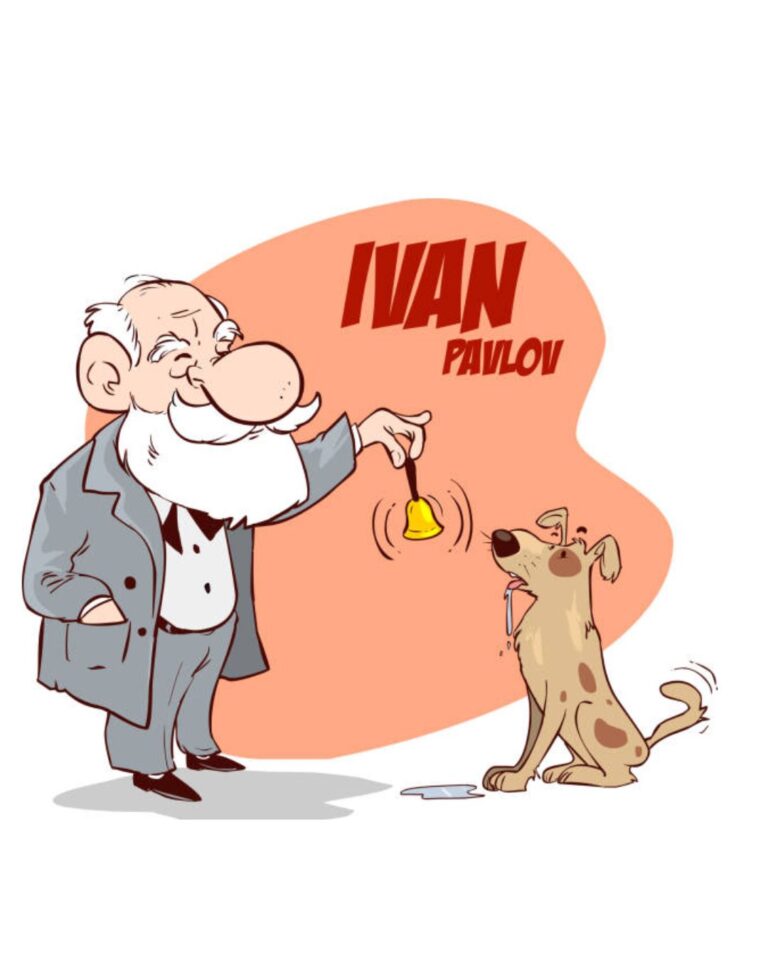Pavlov's Bell? More Like Pavlov's Hell
Psychology students, you might want to sit down for this!

So we all have studied and heard about Pavlov’s Bell or Pavlov’s Dogs. His experiment with “classical conditioning” is one of the most important and widely known works in the field of psychology.
Basic Introduction. Who was Ivan Pavlov?
Ivan Pavlov was a Russian and Soviet experimental neurologist. He had performed many works even before discovering classical conditioning by accident. He had observed the dogs salivating just by seeing his assistant’s white coat, associating it with food. Old man Pavlov noticed that the canines would start salivating even before the actual food was delivered to them. He called this process “psychic secretion.”
This psychic secretion had led Pavlov to conduct an experiment on canines to research the gastric functions in them. He would collect, measure, and analyze their saliva to understand how they responded to different foods.
Before we proceed to understand HOW he did all this, Let me tell you about how the APA (American Psychological Association) did Edward Twitmyers dirty. You see, we all know that Pavlov presented his research on classical conditioning in 1903 and was presented the Nobel Prize, but what we don’t know is that Edwin Twitmyers had done an experiment on humans using the “knee jerk reaction.”. The reason we don’t know about this is due to the simple reason that Twitmyers had presented his research just before lunch, so people were just too hungry to understand what his research meant. Poor man! (F in the comments for Twitmyers)

So now moving back to what was actually in Pavlov’s Horror House. To study the physiology of digestion in dogs, Pavlov found a way to study the internal processes of these canines for longer periods of time. He redirected their digestive juices outside their bodies to measure them.
Based on his previous observations of psychic secretions, Pavlov decided to present a stimulus (a metronome) to the dogs before giving them food. He repeated this several times, and soon, the dogs had begun to salivate with just the sound of the metronome.
He concluded that if a certain stimulus was present in the dog’s surroundings when given food, the dogs would soon start associating that stimulus with food and start salivating.

Classical conditioning is used in our day-to-day lives. It has been proven to provide treatments for anxiety, depression, phobias, and many more mental conditions. This was done by the therapist helping the patient to form a neutral reaction or response.
Surprisingly, people have also used classical conditioning on wild coyotes as well. They prevented these coyotes from preying on domestic animals by creating an aversion to the taste of that meat. This is called taste aversion.
Classical conditioning has become an important element in the history of psychology. To this date, it has been shaping our understanding of human behavior and understanding.
Now, this is something that textbooks say about this experiment.
But this research was much more cruel in real life, and that is something that is not mentioned a lot. To conduct this experiment, old man Pavlov cut holes in the canines’ throats. He removed their esophagus and placed containers under them. So the dogs would eat the food that was given, and it would fall out of the said holes, basically starving them.
Holes were being made along their digestive systems, with tubes attached to them to collect their gastric juices.
The dogs were not able to swallow any of the food that was given to them. To conduct the experiment, Pavlov needed those canines to stay healthy and essentially alive. So, the food had to be placed directly into their stomach to give them nutrients. It does not take a genius to figure out that many of those dogs died due to extreme starvation and injuries.
One lesser-known fact about this is that Pavlov ran gastric juice factories. They used to sell the extracted gastric juices in countries like Russia, France, and Germany as a cure for indigestion. Those people went as far as to quote, “The dogs liked it; they jumped up and down and would eat for several hours,” in their published records.
Another fact that proves that Pavlov was a heartless human is that he had conducted the same experiment on homeless and orphaned children. They were used as subjects without any informed consent and in the absence of their parents.
Those children were fitted with an implant to collect their saliva and were strapped to a chair. Then they were presented with a stimulus just like the canines; here it was a small applied pressure to the wrists. After applying the pressure, the children were fed cookies. Soon, just like the dogs, the children began to salivate with that small pressure.
Needless to say, classical conditioning can be referred to as “scientific achievement born from the bodies of mutilated living beings.”
When we truly think about it, every one of us is conditioned. In a bad way? In a good way? It’s up to you to make the decision. Because let’s be honest with ourselves, even if we wait for a small stimulus before doing any task! Waiting for the bell to ring to have our lunch? Avoid a food item because it makes you sick. That euphoric feeling you get when you smell coffee or tea? Yeah, that sounds like classical conditioning to me!

There is no doubt that classical conditioning has had a huge impact on the study of human behavior. But at what cost? Several children and canines had to sacrifice themselves involuntarily. Those living beings were considered mere subjects and were treated horribly in the name of “scientific research.” And the sad thing about this is that not one book talks about how horrifying this experiment truly was!
It also shows the cruelty of animal experimentation and trials. In the end, whenever we talk about old man Pavlov, we should never forget about all those innocent lives that were sacrificed in the name of research and experimentation.
Yeah, he was bloody horrible!
Thanks for reading, fr! Share if you like it enough. Follow us on Instagram & LinkedIn for more.
Articulated By Juee Pandit, 1st year Student at Media and communication, Fergusson College.


